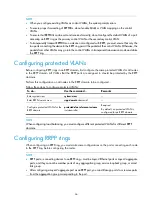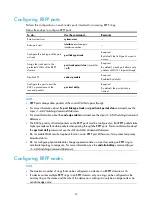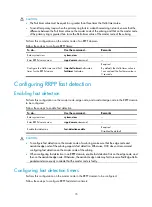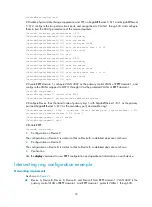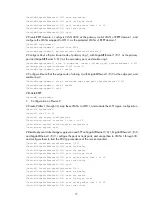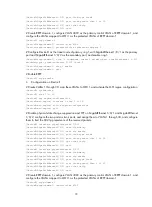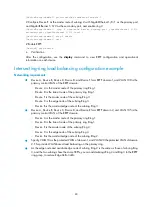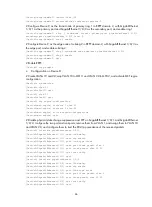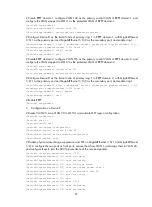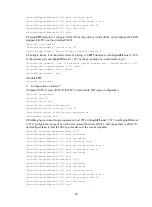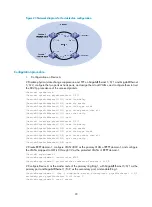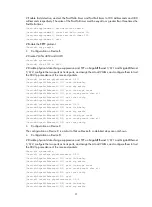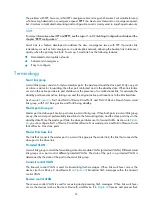
80
[DeviceE-rrpp-domain1] protected-vlan reference-instance 1
# Configure Device E as the master node of subring 2, with GigabitEthernet 1/0/1 as the primary port
and GigabitEthernet 1/0/2 as the secondary port, and enable ring 2.
[DeviceE-rrpp-domain1] ring 2 node-mode master primary-port gigabitethernet 1/0/1
secondary-port gigabitethernet 1/0/2 level 1
[DeviceE-rrpp-domain1] ring 2 enable
[DeviceE-rrpp-domain1] quit
# Enable RRPP.
[DeviceE] rrpp enable
6.
Verification
After the configuration, use the
display
command to view RRPP configuration and operational
information on each device.
Intersecting-ring load balancing configuration example
Networking requirements
•
Device A, Device B, Device C, Device D, and Device F form RRPP domain 1, and VLAN 100 is the
primary control VLAN of the RRPP domain.
○
Device A is the master node of the primary ring Ring 1.
○
Device D is the transit node of the primary ring Ring 1.
○
Device F is the master node of the subring Ring 3.
○
Device C is the edge node of the subring Ring 3.
○
Device B is the assistant-edge node of the subring Ring 3.
•
Device A, Device B, Device C, Device D, and Device E form RRPP domain 2, and VLAN 105 is the
primary control VLAN of the RRPP domain.
○
Device A is the master node of the primary ring Ring 1.
○
Device D is the transit node of the primary ring Ring 1.
○
Device E is the master node of the subring Ring 2.
○
Device C is the edge node of the subring Ring 2.
○
Device B is the assistant-edge node of the subring Ring 2.
•
Specify VLAN 10 as the protected VLAN of domain 1, and VLAN 20 the protected VLAN of domain
2. This provides VLAN-based load balancing on the primary ring.
•
As the edge node and assistant-edge node of subring Ring 2 is the same as those of subring Ring
3, and the two subrings have the same SRPTs, you can add subrings Ring 2 and Ring 3 to the RRPP
ring group, to reduce Edge-Hello traffic.

